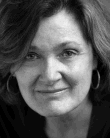Curiosity by Joan Thomas


The Curious Life and Times of Miss Mary Anning
For me, one of the most wonderful things about reading historical fiction is how much I learn as I read. I have always enjoyed reading about archeology – often thought it would have been a good career. So, this new novel, Curiosity, by Joan Thomas looked like an interesting read. It is, in fact, fascinating.
This past year was the 200th anniversary year of Charles Darwin's birth and 150 years since the publication of On the Origin of Species. There was lots of talk about his famous evolutionary theory.
What wasn’t talked about is the fact that more than forty years earlier, in 1811, Miss Mary Anning, at only twelve years of age, discovered the first Ichthyosaurus skeleton to be correctly identified, in the fossil beds along the shore of Lyme Regis. Out past the Cobb, along Marine Parade to Monmouth Beach, Mary and her father searched for fossils.
The story of the life and work of Mary Anning is a compelling one and Joan Thomas has written a wonderful novel. Mary grew up in poverty, several siblings died as there was never enough food for all. “There was general misfortune and misfortune particular to them.” Mary’s father was a cabinet maker who had very little work and many debts – leaving the family destitute when he died, still young. Leaving a son who became an upholsterer with his own family to support, and Mary who polished the fossils she found and sold as “curiosities” to the tourists and fossil collectors who frequented the seaside town of Lyme Regis. At the age of twelve Mary was supporting the family.
It was shortly after her father’s death that Mary found what looked like a crocodile skeleton in the limestone cliffs.
Mary had not been educated, she was barely literate, but she was determined to learn as much about fossils as she could. She had a curious mind – she was an eccentric in that she cared little for propriety or the social restrictions of the time. She was as much a “curiosity” as her fossils.
It is hard to imagine now, how blasphemous it was two hundred years ago, to think that not everything on the earth came directly off Noah’s Ark. Even the most educated, men of scientific minds, believed that these fossils were of the animals that did not make it on to the Ark, and therefore did not live to reproduce.
Mary, in fact, is selling fossils to these men – it is a time of great collections. There is competition among them to collect the fossils found by Mary Anning. Although Mary Anning will never enter the rooms of the Geological Society of London, the skeletons that she had discovered would cause a sensation, raising questions in scientific and religious circles. Mary asks a question of an eminent scientist, “If the earth was formed on the third day and the creatures on the fifth, how come the creatures to be buried so deep within the earth?” And he said, “The rock was all the sediment of the Flood, and so contained the bodies of the creatures who died in it, turned to stone to caution man.” Mary is finding this hard to believe.
Henry De la Beche will enter Mary’s life when he arrives in Lyme Regis. But the reader will meet Henry sooner than Mary does. We meet him on the run from a Military College where he has disgraced himself. He lands in London at the home of his uncle and attempts to enter society despite his disgrace. Henry grew up in Jamaica, his family plantation owners, and owners of slaves – the Wilberforce bill abolishing the slave trade will make it difficult for the plantation to replenish it’s work force. But Henry does not seem to suffer financially – certainly he is living a far more secure and comfortable life than Mary Anning.
Mary and Henry meet in Lyme Regis and she takes him on as a sort of partner. They are both besotted with the fossils. Henry is a skilful artist, drawing the skeletons and producing prints. Together they contributed to the changes in beliefs and scientific ideas about prehistoric life. And it is Henry who says to a fellow archeologist “There’s something you should know! It’s about Miss Anning. She disputes your science! Miss Anning is harbouring her own private heresy. She disputes the likelihood of finding Noah on these shores.” And Henry adds, “I question whether man inhabited this part of the globe at the time of the Flood.”
Both Henry and Mary are intoxicated by their discoveries, and become close friends. Mary is always aware that despite their work together, she lives in a world far apart from the one that Henry inhabits. His is the world of “bright gowns”, but “In Mary’s house, they had no fire.” Mary yearns for Henry’s love but, “She knew the rules of her class and he knew the rules of his.”
Mary went on to make many more discoveries, contributing to the advancement of the science of archaeology. In 1847 at the age of only 47 Mary Anning died of breast cancer. Henry de la Beche “now president of the Geological Society of London, wrote a eulogy he read to a meeting of the society and published in its quarterly transactions. Such eulogies were an honor normally only accorded to fellows of the society, and Anning's was the first ever given for a woman.”
Joan Thomas is to be commended for telling her story.